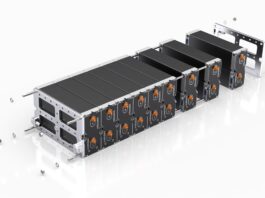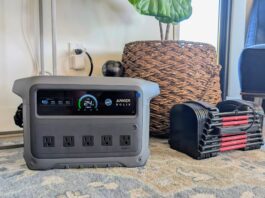

Ford has filed a new patent application for hardware that would allow EVs to charge while driving.
The new patent filing was published by the United States Patent and Trademark Office (USPTO) Aug. 15 and was submitted by Ford to the agency earlier this year. It deals with a method for aligning the wireless inductive charging coils mounted on an EV with ones embedded in the road surface.
Wireless inductive charging relies on transmitting electricity through the two sets of coils, in this case with the road-embedded coils connected to some form of power source. However, efficiency is based on how closely the vehicle is aligned with the row of coils in the road surface, so Ford is looking at ways to to achieve precise alignment beyond simply having the driver steer to maintain a consistent course over the coils.

Ford in-road wireless EV charging patent image
This was discussed in a previous Ford wireless-charging patent published by the USPTO in 2023, but this time the automaker is focusing more specifically on the use of ground-penetrating radar to allow the vehicle to better track the coils.
In addition to locating them, radar could be used to determine the condition of the coils, with the system advising the driver to switch lanes and potentially informing maintenance crews if coils are found to be inoperable. Vehicles could also communicate with each other, potentially negotiating the use of certain lanes depending on their state of charge, Ford suggests in the application.

Ford in-road wireless EV charging patent image
Drivers could manually steer vehicles over coils, with guidance information conveyed via a head-up display or other interface, Ford says in the application, but the automaker also suggests various levels of automation. Feedback similar to that used by active lane control systems could help nudge the car in the correct direction, or hands-free driving systems like Ford’s BlueCruise could take over the task completely.
While it’s unclear if Ford’s system will ever be deployed at scale, the inductive wireless charging industry as a whole is finally on its way toward genuinely competing with charge ports, connectors and cables—potentially doing for electric cars what wireless connectivity has done for smartphones.

Source link by Green Car Reports
Author news@greencarreports.com (Stephen Edelstein)
#Ford #investigating #inductive #charging #driving






